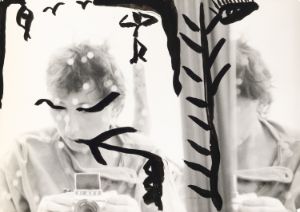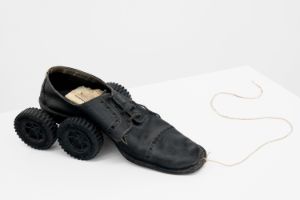Exhibitions 2026
Peter Hujar / Liz Deschenes: Persistence of Vision
19 March to 28 June 2026
Bringing together the works of Peter Hujar and Liz Deschenes, Persistence of Vision opens an intergenerational dialogue on photography. Working in New York City between the Stonewall uprising of 1969 and the onset of the AIDS crisis in the 1980s, Peter Hujar captured a pivotal cultural moment in piercing black-and-white photographs. In the exhibition, Hujar’s photographs are interspersed with contemporary works by New York City-based artist Liz Deschenes. These interludes invite viewers to pause, slow down and consider Hujar’s work in a new light.

Peter Hujar, Self-Portrait Jumping, 1974
© The Peter Hujar Archive / VG Bild-Kunst, Bonn 2025
Marina Abramović: Balkan Erotic Epic. The Exhibition
15 April to 23 August 2026
One of the most influential performance artists of all time, Marina Abramović presents Balkan Erotic Epic. The Exhibition at Gropius Bau in spring 2026. The show traces her ongoing engagement with ritual, eroticism, death and the body as a site of political resistance. Drawing on the folklore of Abramović’s native Balkans, the exhibition weaves together filmic and sculptural installations with live performance to explore eroticism as an offering that binds life and death, the self and the cosmos.

Marina Abramović, Women Massaging Breasts II from the series Balkan Erotic Epic, C-Print, 2005, Serbia
© Marina Abramović. Courtesy of the Marina Abramović Archives
Gabriele Stötzer: Dabei sein und nicht schweigen
19 June to 6 December 2026
For more than five decades, Gabriele Stötzer has been grappling with questions of justice, gender and self-determination. Her own body often plays a central role in her work – not as an object, but as a site of resistance and feminist self-assertion. Opening at Gropius Bau in June 2026, Dabei sein und nicht schweigen will be the artist’s largest institutional solo exhibition to date.

Gabriele Stötzer, Mir gegenüber – Selbst im Spiegel, 1985
© VG Bild-Kunst, Bonn 2025
Kreuzberg (WT)
10 September 2026 to 17 January 2027
Nowhere were the social and cultural changes of 1960s and 1970s West Germany more powerfully manifest than in Berlin’s Kreuzberg neighbourhood. Here, the broader transformations reshaping life in the Federal Republic through labour recruitment agreements with countries including Italy, Greece, and Turkey became visible at the local scale. Opening in autumn 2026, the group exhibition Kreuzberg (working title) focuses on the diverse and largely overlooked cultural production on the topic of labour migration and on how artists in the neighbourhood have responded to the tensions and issues of their time.

Vlassis Caniaris, L’émigrant, 1972.
Courtesy the Estate of the Artist and Galerie Peter Kilchmann, Zurich, Paris, photo: Hafid Lhachmi
Christoph Schlingensief: ES IST NICHT MEHR MEIN PROBLEM, MACHT EURE SCHEISSE ALLEINE (WT)
9 October 2026 to 17 January 2027
Over the course of his artistic career, Christoph Schlingensief relentlessly confronted the absurdities of the present. In autumn 2026, Gropius Bau presents his visionary work with ES IST NICHT MEHR MEIN PROBLEM, MACHT EURE SCHEISSE ALLEINE (working title), an exhibition that spans the range of his œuvre from sensational political actions to radical stage productions and the coalescence of performance and visual art.

Christoph Schlingensief, Church of Fear, Biennale Venedig, 2003,
Courtesy of Christoph Schlingensief Estate, photo: Edzard Piltz